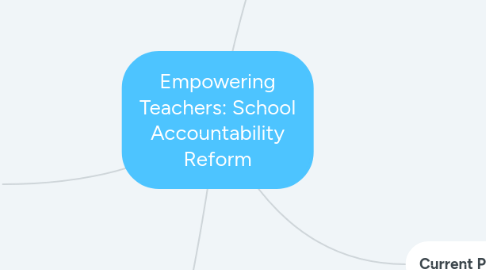
1. Proposed Reform
1.1. Assessment
1.1.1. Beckett, G. H., Brown, L. & Wang, L (2006). Controversies of Standardized Assessment in School Accountability Reform: A Critical Synthesis of Multidisciplinary Research Evidence. Applied Measurement in Education, 19(4), 305–328. https://doi.org/10.1207/s15324818ame1904_5
1.2. Benefits
1.2.1. Brookhart, S., Moss, C., & Long, B. (2017, November 06). Using Formative Assessment to Bring Clarity to the Classroom. Retrieved March 30, 2019, from http://corwin-connect.com/2017/11/using-formative-assessment-bring-clarity-classroom/
1.2.2. Heritage, M. (2017, November 06). Using Formative Assessment to Bring Clarity to the Classroom. Retrieved July 13, 2019, from https://corwin-connect.com/2017/11/using-formative-assessment-bring-clarity-classroom/
1.2.3. Nolen, S. (2011). The Role of Educational Systems in the Link Between Formative Assessment and Motivation. Theory Into Practice, 50(4), 319–326. https://doi.org/10.1080/00405841.2011.607399
2. Research Structure
2.1. Astalin, P. (2013) QUALITATIVE RESEARCH DESIGNS: A CONCEPTUAL FRAMEWORK. Retrieved from https://pdfs.semanticscholar.org/baa7/c8f5577b0b1798b5e9f559f5cbae32bf1a36.pdfAstalin
2.2. Patten, M. L., & Newhart, M. (2018). Understanding research methods an overview of the essentials. New York, NY: Routledge.
2.3. Richards, R. (2015, March 10). The Qualitative Formative Assessment Toolkit: Document Learning with Mobile Technology. Retrieved July 09, 2019, from https://www.edutopia.org/blog/qfat-document-learning-mobile-technology-reshan-richards
3. Purpose
3.1. Besser, M., Klieme, E., Pinger, P., & Rakoczy, K., & (2018). Interplay of formative assessment and instructional quality—interactive effects on students’ mathematics achievement. Learning Environments Research, 21(1), 61-79. DOI: http://dx.doi.org/10.1007/s10984-017-9240-
3.2. Gronlund, Norman E, K., & Waugh, C. Keith. (2019). Assessment of Student Achievement. (Tenth Ed.) NJ: Pearson
3.3. William, D. (2010). Standardized Testing and School Accountability. Educational Psychologist, 45(2), 107–122. https://doi.org/10.1080/00461521003703060
4. Current Practice
4.1. Assessment
4.1.1. Bauerlein, M. (2015, January 01). Standardized Culture | Mark Bauerlein. Retrieved July 3, 2019, from https://www.firstthings.com/article/2015/01/standardized-culture
4.1.2. Bellara, A., & DeLuca, C. (2013, September/October). The current state of assessment education: Aligning policy, standards, and teacher education curriculum. Retrieved July 3, 2019, from DOI: http://fairtest.org/dangerous-consequences-highstakes-standardized-test
4.1.3. Bingham, G., Holbrook, T. & Meyers, L. E. (February 2010). Using self-assessments in elementary classrooms: elementary students aren't too young to use self-assessment. Retrieved March 24, 2019 from https://journals.sagepub.com/doi/full/10.1177/003172171009100515
4.2. Limitations
4.2.1. Machucho, M. (May 22, 2018). Factors That Affect Students' Test Scores. Retrieved March 24, 2019 from https://owlcation.com/academia/Factors-That-Affect-Students-Test-Scores
4.2.2. Popham, W. J. (1999, March). Why Standardized Tests Don't Measure Educational Quality. Retrieved from http://www.ascd.org/publications/educational-leadership/mar99/vol56/num06/Why-Standardized-Tests-Don't-Measure-Educational-Quality.aspx
4.2.3. Popham, W. J. (2001, March). Teaching to the Test? Retrieved March 30, 2019, from http://www.ascd.org/publications/educational-leadership/mar01/vol58/num06/Teaching-to-the-Test%C2%A2.aspx

